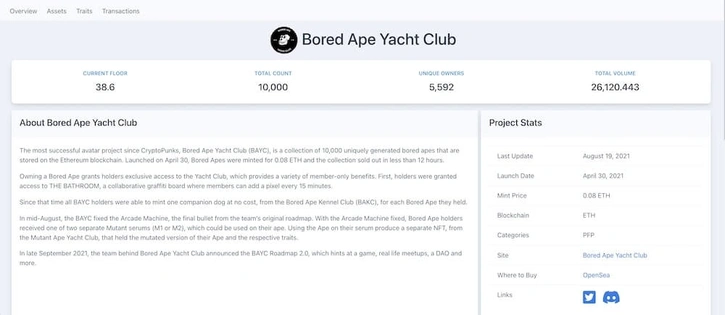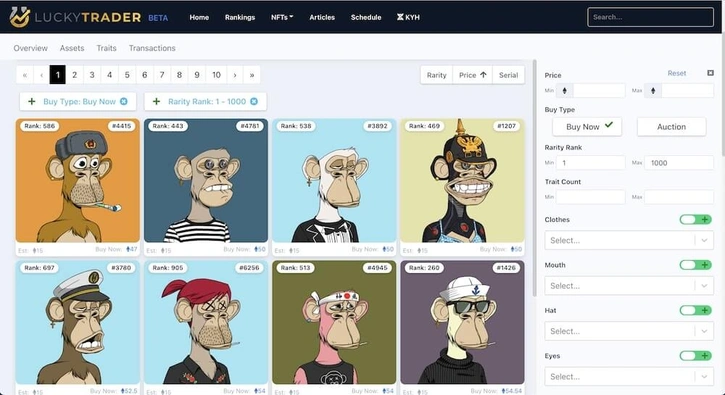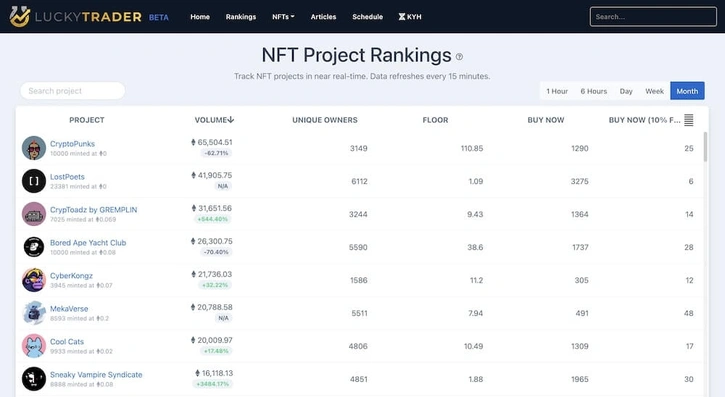How to Use Lucky Trader to Find the Perfect NFT

A question we frequently get asked from new NFT participants is, “how do you know what to buy?”
With a plethora of new NFT projects dropping daily, there is no shortage of potential spending opportunities. There are countless cute animal avatar projects, thousands of pieces of digital art, and an increasing amount of blockchain games for you to decide between.
So how then, can you cut through the noise and find an NFT for you?
Below we’ll show you three ways the Lucky Trader tool suite can help you find the perfect NFT for your portfolio.
For more information about how to utilize the tools on our site, please refer to our guide to LuckyTrader.com.
Analyzing a Project: The Unquantifiable
While the majority of project analysis may happen with a variety of data metrics, the first way you can begin to gauge the strength of a project is through a handful of intangible, and unquantifiable metrics.
Utilizing the Lucky Trader project pages, you can gain a sense of a project’s historical roadmap, gain access to their respective communities via Twitter and Discord, and get a glimpse into the future utility of the project.
Though often subjectively viewed and interpreted, these few points can give collectors a big leg up when evaluating a project.
Is there no official roadmap? Are the developers anonymous and unwilling to put their faces behind the project? Does the Discord have few members with little activity?
While these questions should not be directly attributable to your stance on a project, they will help inform and provide context about the numbers that follow.
How to Find a Valuable NFT using Lucky Trader’s Asset Explorer and Traits Page
Humans love to find and collect rare and unique items. NFTs are no different.
When a project provides metadata and properties for their NFT collection, Lucky Trader is able to curate a dynamic asset explorer for the collection on LuckyTrader.com Users can interact with the asset explorer in a variety of different ways, but perhaps the most important may be the opportunity to find mispriced assets relative to the rest of the collection.
After loading a collection’s asset explorer, you’ll notice the items are automatically sorted based on descending rarities - starting with the most rare and leading to the least rare items from the respective collection.
Scrolling through to find mis-priced prices relative to asset rarity would be inefficient, so we can use the dynamic filters to create a more specific list for us.
For example, if you want to find the cheapest available Bored Ape that has a buy now price and is within the top 1,000 in rarity, you can filter on “buy now,” rarity range 1-1000, and change your sort to ascending on price.
You can perform a similar filtering process based on traits as well, or use the Lucky Trader Trait page to view the floor assets for particular attributes.
You can repeat this process with specific attributes or other collections to find NFTs that may be priced cheaper than a relatively similar ranked asset.
Finding an NFT Collection Using Volume Trends
Depending on your goals, utilizing volume trends to identify trending opportunities is a fruitful way to make an NFT selection.
While a small sample size of strong volume may only be indicative of a small blip of demand, the Lucky Trader market rankings will be able to showcase volume trends over a variety of timeframes.
Projects that are able to maintain high volumes of trading typically indicate a strong demand and high relevance within the NFT ecosystem.
For example, using our project rankings to sort on the last month of activity will allow you to focus on projects that have created a sustained relevance. Based on your personal goals, you could find a project with notable demand and continue your research from there.


